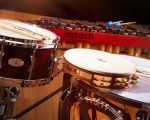How Do You Spell Cello the Musical Instrument? A Guide to Learning and Spelling Cello
May 02, 2025
How Do You Spell Cello the Musical Instrument? A Guide to Learning and Spelling Cello
1. What is a Cello?
If you're unfamiliar with the cello, you're not alone. The cello is a string instrument that belongs to the violin family, but it is much larger and is played while seated with the instrument resting between the knees. It has a deep, rich sound that can evoke emotions ranging from intense sadness to joy. It’s widely used in both solo and orchestral performances.
Before learning how to spell cello, it’s important to understand its origins and place in the musical world. The cello has been around for centuries, dating back to the 16th century in Italy. Over time, it has become one of the most beloved instruments, especially in classical music. Cello players like Yo-Yo Ma and Jacqueline du Pré have taken the instrument to great heights, making it popular around the world.
2. The Correct Spelling of Cello
Spelling “cello” can be tricky for some, especially if you're unfamiliar with musical terminology. However, the correct spelling of the instrument is “cello”. It’s a straightforward word, but many people may confuse it with “chello” or “cellos” when pluralized, but these are incorrect.
One common source of confusion is the word "cello" itself, as it’s often misheard. It's pronounced "CHEH-loh," which may sound like it begins with a “ch” sound, leading some to mistakenly add an extra “h” when spelling it. But in reality, "cello" is an Italian word meaning "small," a nod to its small relative, the viol.
2.1 Common Misunderstandings
There are some frequent spelling mistakes made when people try to write down “cello.” One of the most common is “chello,” a misspelling that comes from mishearing the word. Some might also incorrectly assume that adding an “s” at the end makes it plural, but the correct plural form is “cellos,” not “cellos’” or “celloses.”
3. Cello: A Sound to Remember
The cello’s deep, rich tones have made it a favorite among composers and musicians alike. I remember the first time I heard a cello perform live—it was during an orchestra performance, and the sound filled the entire hall. The cello can create an atmosphere of grandeur or melancholy, depending on the piece being played. The long, expressive notes seem to resonate with the heart.
It's easy to fall in love with the sound of the cello, and many beginners are often inspired to learn the instrument after hearing one. However, the journey of learning to play the cello is a challenging but rewarding experience. Whether you are an aspiring cellist or simply an admirer of the instrument, understanding its role in music and how to properly identify it through spelling and pronunciation is a great first step.
3.1 Popular Cello Music
Some of the most iconic pieces written for the cello include works by composers such as Ludwig van Beethoven, Franz Schubert, and Edward Elgar. These pieces, such as Beethoven’s Cello Sonata No. 3 and Elgar’s Cello Concerto, showcase the cello’s ability to express deep emotions. In fact, these pieces have become some of the most loved in classical music and are often performed by cellists around the world.
3.2 The Role of the Cello in Music
In orchestras, the cello plays a crucial role. It often provides the harmonic foundation alongside the basses while also contributing beautiful melodic lines. In chamber music, the cello frequently takes on a more prominent role, sometimes acting as the bridge between the lower and higher strings. Cellists can express a wide range of musical styles—from Baroque to modern, showcasing the instrument's versatility.
4. Learning to Play the Cello
If you’ve decided to take up the cello or are simply curious about how to learn it, you're in for an exciting musical journey. Learning the cello involves patience and dedication, as it requires strong finger coordination and the ability to play with a bow. Many people find that the challenge is part of the fun.
4.1 Finding a Teacher
A good teacher can make all the difference when learning an instrument as complex as the cello. Many cities have qualified cello instructors who can help beginners start their musical journey. One of the best ways to find a teacher is by asking for recommendations from local music schools, or even checking online for reviews and credentials.
4.2 Practice Makes Perfect
Once you have found your teacher, the next step is to practice regularly. Like any instrument, the more you practice, the better you’ll become. Setting aside time each day to practice scales, songs, and techniques will greatly improve your skill level. Whether you’re learning to read music or getting comfortable with your bow, consistent practice is essential.
5. Why Understanding the Spelling of Cello Matters
As with any musical instrument, understanding how to correctly spell and pronounce "cello" helps foster a deeper respect for the instrument and its rich history. It also allows us to engage with others in discussions about the cello more confidently. This understanding is key to embracing the music and the instrument itself.
Whether you are talking to a professional cellist, attending a concert, or just discussing music with friends, correctly spelling and pronouncing "cello" reflects your knowledge and appreciation for the instrument. So next time you talk about the cello, you can confidently say “cello” and impress those around you with your musical knowledge.
5.1 Fun Fact
Did you know that the cello is often described as the instrument closest to the human voice in terms of tone? It's no surprise that it is often featured in some of the most emotive classical music. I love how the cello, with its low and rich tones, seems to speak directly to the heart.
6. Conclusion
Whether you're a beginner looking to learn the cello or simply an admirer of its beauty, understanding how to properly spell and pronounce "cello" is an important step in fully embracing this incredible instrument. I hope this guide helps you appreciate the significance of the cello and its place in music history. Remember, it’s not just about getting the spelling right; it’s about connecting with the music and the story that each note tells.
For more tips on learning the cello or finding the best music resources, be sure to visit [Insert Website Name].







